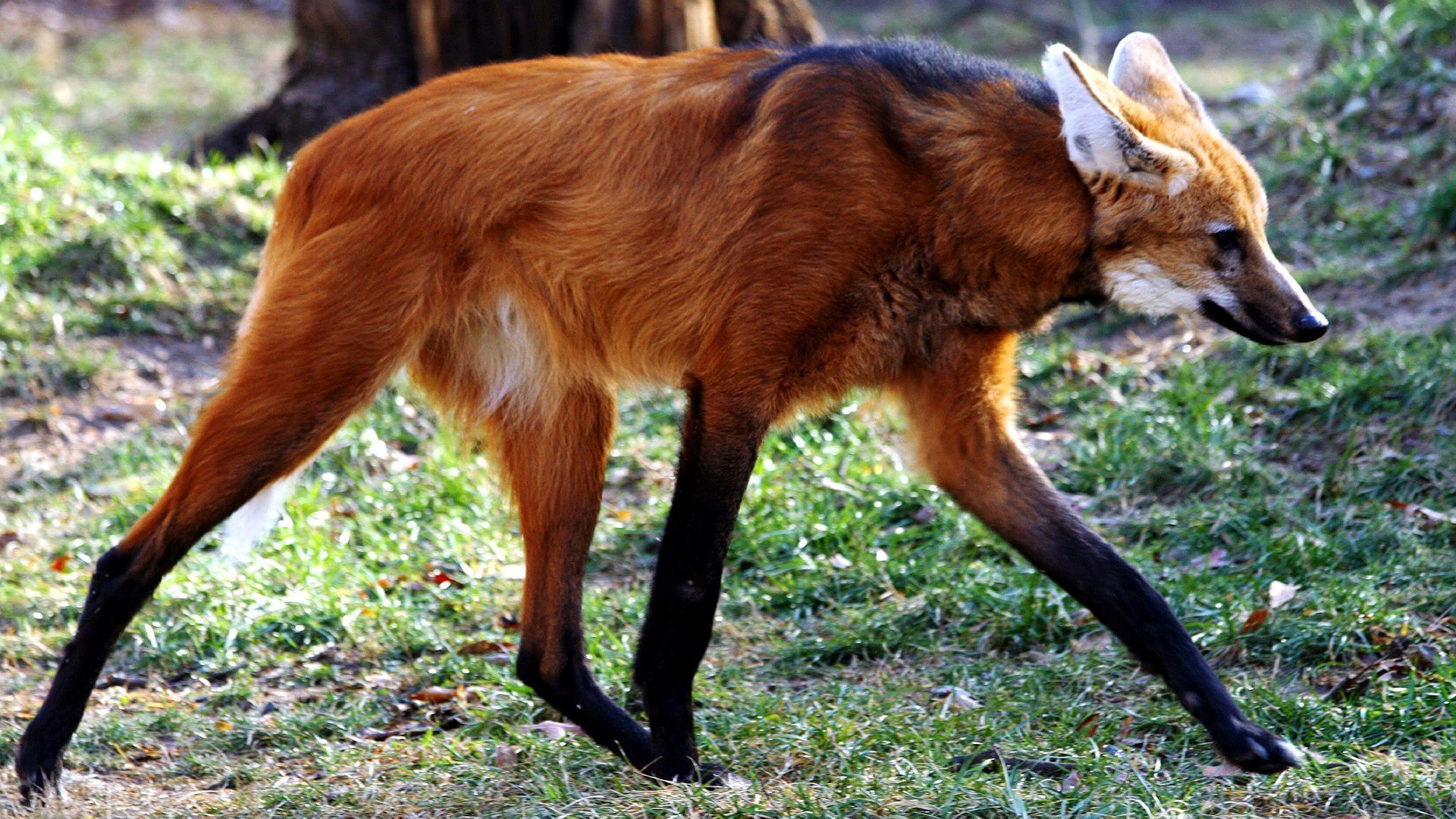Maned wolf
(Chrysocyon brachyurus)

Description
The maned wolf ( Chrysocyon brachyurus ),(the Guarani aguara guasu,'big fox') or maned wolf is a canid native to the regions of thickets and grasslands Chaco of Argentina and Paraguay,the Beni plains in Bolivia,the pampas del Heath in Peru,2 as well as in the basin of the Paraguay and Paraná rivers,in South America.It is the largest of the canids of South America.It is harmless to man and cattle;However,the occupation of its habitat and hunting have reduced it to isolated areas.It is registered in Appendix II of the list of protected species of CITES (Convention on International Trade in Endangered Species of Wild Fauna and Flora).The waxy guazú is corpulent compared to other wild canids,an impression reinforced by the density of its coat and the distinctive mane of mane around the neck.It reaches 107 cm in height at the withers,and up to 125 cm in length,to which we must add about 45 cm of tail.It can reach 34 kg of weight.The structure of the body resembles that of a fox,although the long legs give it a very peculiar ungainly air.The coat is long and thick,reddish orange,longer in the neck region,with a lighter belly.It has black markings on the snout,extremities and along the spine,as well as other white markings on the throat,the inside of the ears and occasionally on the end of the tail.The head is long and small in relation to the size of the body;Erectile mane allows him to look bigger to threaten his peers.The pupils of the eyes are circular,unlike foxes,which have them in the form of a vertical ellipse.The ears are large,which facilitates radiating heat to reduce body temperature.It has strong nails on the front limbs,although it is unable to dig with them.The long legs give it a superior visibility in the high pasture regions in which it lives.Like the hyena,it moves the extremities of the same side when walking because it allows you to save energy and travel great distances;this leaves a distinctive mark.They are excellent walkers,traveling the same paths back and forth.It does not need to run given the small prey that it pursues,as well as its small chest volume.Individuals communicate with each other over long distances with a hoarse,low-pitched,high-range howl that has given him the reputation of a wolverine in many regions.In 2009,a DNA study conducted by a scientific team led by Graham J.Slater of the University of California at Los Angeles confirmed that the closest relative to the guazú will be the wolf of the Falkland Islands ( Dusicyon australis ),extinct by humans in the 19th century.The study confirmed that both species separated about 6.7 million years ago.4 The canids only managed to colonize South America about 3 million years ago,in the event called in paleobiogeography the great American biotic exchange,which occurred when the continents of North Americaand from the South they were connected thanks to the formation of the Isthmus of Panama.This means that the lineages of both species came from North America and distanced.No fossil specimens of other species of the genus Chrysocyon have been found,so it is assumed that it evolved independently from the Pleistocene.
Taxonomic tree:







